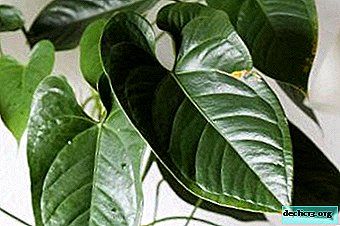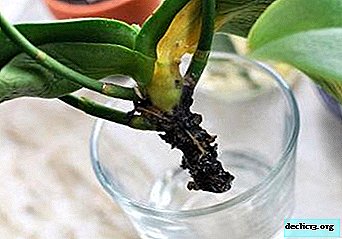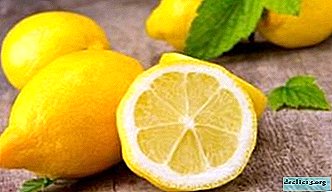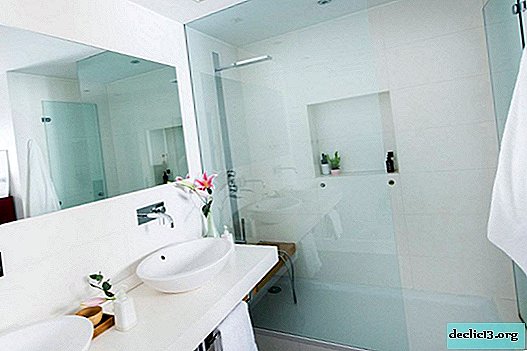What kind of plant peperomia variegate and how to properly care for it?
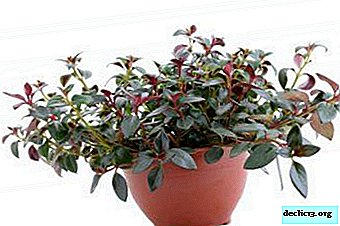
Peperomia is a longtime favorite flower growers. Despite the fact that flowering is practically absent, the appearance of the flower fits perfectly into the interior of the apartment, adds coziness. With proper cultivation, you can get a beautiful, spectacular bush on the window. Read about all the subtleties and features of the content in our article, we will tell you what variegate peperomia is, how it looks, how to care for it, transplant it and propagate it, and also what diseases and pests can threaten it.
Botanical Description
Among plants, it is classified as an epiphyte from tropical and subtropical regions of South America. Belongs to the family of pepper, perennial, herbaceous plants. In size, there are representatives from 14 centimeters high and up to half a meter.
Reference! The name "peperomia" from Greek translates as "pepper-like."Variegate peperomy or Peperomia variegata is represented by three varieties:
- blunt (Obtusifolia Variegata);
- magnolia leaf (Magnoliaefolia Variegata);
- Cluzial (Сlusiifolia Variegata).
Peperomia of Variegat is not found in nature, it is the result of pure selection.
The appearance of the plant and its photo
In botany, the term "variability" means variegation. That is, in each variety, this type of foliage can be selected. There is a blunt, magnolian, klusielistny variegate peperomy.
- The leaves of the blunt variegate subspecies are usually creamy white with a green center. As a rule, they have a border and a grayish pattern. The trunk itself is creeping, large. The leaves are round, dense.
- Magnolia leaf variegate looks different. This is a plant with erect leaves and violently branching shoots. The foliage is fleshy, broad, with white or yellowish specks of specks.
- Kluzielistnaya is a large plant with thick reddish stems. A sheet plate of a light, milky hue with a slight red bloom, small light specks and a burgundy edging.
This flower not found in nature, therefore, its prevalence in the world depends only on the person.
Below you can see a photo of the plant:





How to care at home?
In order for variegate peperomia to grow healthy and beautiful, one should know a number of requirements for its content.
Location and Light
This flower needs moderate, diffused light without direct exposure to the plant.. It is best to keep the pot on the west or east side. However, if this is not possible, direct rays from the south window can be scattered with paper or translucent fabric. The daylight hours should be 15-16 hours.
Temperature
In the spring-summer period, the temperature should be 20-22 degrees. Autumn is not lower than 16 degrees. It is important to avoid drafts and sudden changes in air temperature.
Watering
In spring and summer it needs abundant watering, by autumn - in moderate. Water for irrigation should be slightly warmer than the general temperature. It is important not to flood the plant, otherwise the root decay is inevitable. Optimum watering when the topsoil is completely dry.
Important! Environmental humidity should be maintained at 60%, occasionally spraying leaves.Top dressing
It is important to apply specialized fertilizers from spring to autumn twice a month, which are most easily purchased at a flower shop. Such drugs have a balanced composition.
Pruning and transplanting
 Pruning is done as it grows. Here is a small guide to action, if you decide to produce a plant.
Pruning is done as it grows. Here is a small guide to action, if you decide to produce a plant.
- Inspect peperonia and determine the desired shape.
- Pinch the tops of the shoots at the level of the fifth or fourth leaf.
- If desired, cut parts can be rooted.
Young peperomies are transplanted annually in the spring, older than three years - every two years. Below is a step-by-step transplant guide.:
- Pick the right pot. It should be only two to three centimeters larger than the previous one.
- At the bottom, pour a three-centimeter layer of drainage and the same amount of new soil.
- Carefully remove the plant from the old pot and rinse the root system.
- Dip the flower in a new container and sprinkle with the rest of the earth. Do not tamp the soil!
- Moisten the substrate slightly and sprinkle with earth again.
An ideal soil would be a combination of peat, sheet land and river sand in a ratio of 1: 2: 1.
Wintering
Extra light is needed in winter. You can use conventional incandescent bulbs. Placing them at a distance of 40-50 cm above the plant. A bright winter day should be 8 hours. Be sure to apply specialized fertilizers monthly throughout the winter.
Breeding
There are several ways to propagate variegate peperomia.
Cuttings
It is important to remember that this method is applicable in spring and summer.
- It is necessary to cut off the top or stem part with two three nodal buds.
- Place either in rooting water or in the ground, covered with a plastic bottle.
- Then, for 20-30 days, maintain the temperature in an organized greenhouse at around 23-25 degrees.
Bush propagation
This the method is quite simple and affordable even for beginners.
- Moisten the soil.
- Extract the plant and disassemble into several bushes, carefully separating the roots.
- Transplant each bush into a different pot.
- Especially avoid direct sunlight in the first week after the procedure.
Seed cultivation
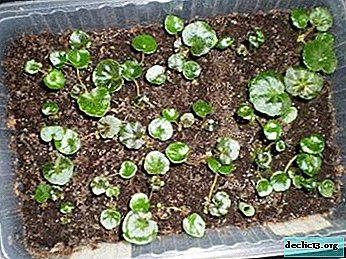 Choose a wide capacity for planting seeds.
Choose a wide capacity for planting seeds.- Prepare the soil in a 1: 1 ratio of sand and sheet soil.
- Moisten the soil and sow the seeds.
- Create greenhouse conditions: cover with glass or film. Maintain a temperature of 25 degrees.
- Spray the seedlings periodically with a spray gun.
- Dive seedlings after the formation of two real sheets in boxes at a distance of 4 cm from each other.
- Provide moderately bright but diffused lighting.
- Grow small peperonii planted in separate pots. The capacity should be no more than 7 centimeters in diameter.
Bloom
Typically, these plants do not differ prominent inflorescences. In summer, long green spikelets-columns appear - this is all the flowering.
Diseases and Pests
- Fallen or darkened leaves. Usually associated with a sharp drop in air temperature and scarce watering.
- Puckering leaves. It appears with an excess of direct sunlight.
- Stains of rot and fading are associated with waterlogging of the soil.
- Of the pests, the most dangerous and unpleasant for peperonium are thrips, ticks, scale insects, nematodes. After treatment with insecticides, the problem disappears.
Similar flowers
Each flower is unique, but there is something similar in variegate peperonia and these flowers definitely have:
- Maranta.
- Caladium.
- Japanese Fatsia.
- Crassula.
- Dieffenbachia.
- Ficus rubbery.
In the article, we examined an interesting houseplant and found out what constitutes variability in peperomia. Now you can not only show off your knowledge, but also grow an interesting flower at home.

 Choose a wide capacity for planting seeds.
Choose a wide capacity for planting seeds.



